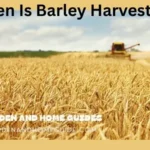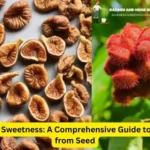Tree Care
When To Harvest Walla Walla Onions?
The Walla Walla onion, with its distinctive sweet flavor and enormous size, is a prized possession for any gardener. But the journey from seed to the perfect onion doesn’t end with planting and nurturing. The crucial final step, harvesting, demands careful timing to ensure the onions reach their full potential.
This essay of Gardenandhomeguide.com delves into the intricacies of harvesting Walla Walla onions, exploring the factors that determine the ideal harvest window, the methods employed, and the crucial considerations for maximizing flavor and quality.
Understanding the Onion’s Growth Cycle:
The Walla Walla onion, like its brethren, follows a predictable growth cycle marked by distinct stages. Understanding these stages is key to determining the optimal harvest time.
- Seedling Stage: This initial stage begins with germination and continues until the onion plant develops its first true leaves. This phase is crucial for establishing a strong root system and ensuring healthy growth.
- Bulb Formation Stage: As the plant matures, it begins to focus its energy on developing the bulb. This stage is characterized by the gradual swelling of the bulb, accompanied by the production of layers or “scales.”
- Maturity Stage: This final stage marks the culmination of the onion’s growth cycle. The bulb reaches its full size and weight, and the leaves begin to yellow and wither. This stage is crucial for developing the onion’s characteristic flavor and texture.
The Art Of Timing: When To Harvest Walla Walla Onions?
While the onion’s growth cycle provides a general framework, determining the precise harvest window requires careful observation and consideration of several factors.
- Visual Cues: The most obvious indicator of maturity is the foliage. As the onion reaches maturity, the leaves begin to yellow and wither, eventually collapsing onto the ground. This visual cue signals that the bulb has completed its growth cycle and is ready for harvest.
- Bulb Size and Firmness: The size and firmness of the bulb provide valuable insights into its maturity. A mature Walla Walla onion typically boasts a large, firm bulb with a diameter of at least 4 inches. The bulb should feel solid and heavy, indicating that it has reached its full potential.
- Time of Planting: The time of planting plays a crucial role in determining the harvest window. Onions planted in early spring will generally mature earlier than those planted in late spring or summer.
- Climate and Weather: The prevailing climate and weather conditions significantly influence the onion’s growth rate and maturity. Warmer temperatures and ample sunlight typically accelerate the growth process, leading to an earlier harvest. Conversely, cooler temperatures and cloudy weather can delay maturity.
Harvesting Methods: Ensuring Minimal Damage and Optimal Quality:
Once the onion has reached maturity, it’s time to harvest. The chosen method must ensure minimal damage to the bulb while preserving its quality.
- Pulling by Hand: This method is ideal for small gardens or when harvesting a limited number of onions. Gently grasp the top of the foliage and pull the onion upward, ensuring the bulb remains intact.
- Using a Garden Fork: For larger gardens, a garden fork can be used to loosen the soil around the onion before carefully lifting it out. This method minimizes damage to the bulb and surrounding plants.
- Cutting the Tops: Some gardeners prefer to cut the foliage approximately 1 inch above the bulb instead of pulling the entire plant. This method allows the bulb to continue growing slightly, resulting in a larger, more flavorful onion.
Post-Harvest Care: Preserving the Onion’s Flavor and Quality:
After harvesting, proper post-harvest care is crucial for preserving the onion’s flavor and quality.
- Curing: Curing involves drying the onions in a well-ventilated, dry location for 10-14 days. This process allows the outer layers of the onion to dry and harden, creating a protective barrier against spoilage.
- Storing: Once cured, onions can be stored in a cool, dry, well-ventilated location. Avoid storing onions in direct sunlight or in humid environments.
The Importance of Timing: Maximizing Flavor and Quality:
Harvesting Walla Walla onions at the optimal time is crucial for maximizing their flavor and quality.
- Flavor Development: As the onion matures, its flavor intensifies and develops its characteristic sweetness. Harvesting too early can result in a bland, watery onion. Conversely, harvesting too late can lead to a strong, pungent flavor.
- Storage Life: Properly cured and stored onions can last for several months. However, harvesting too early can result in a shorter storage life, as the onion will not have developed its protective outer layers.
Conclusion: The Art of Timing in Onion Harvesting
Harvesting Walla Walla onions is not simply a matter of pulling them from the ground. It requires a keen understanding of the onion’s growth cycle, careful observation of visual cues, and a sensitivity to the nuances of climate and weather. By mastering the art of timing, gardeners can ensure that their Walla Walla onions reach their full potential, yielding a bountiful harvest of sweet, flavorful onions that are a testament to their dedication and horticultural expertise.






